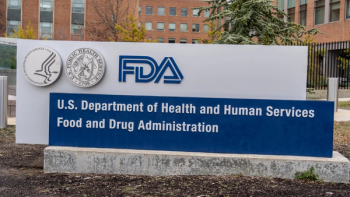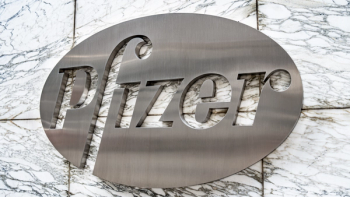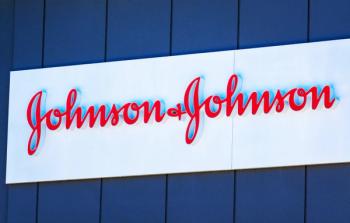Key Takeaways
- Ajovy shows sustained two-year efficacy: Final PEARL Phase IV results confirm fremanezumab’s long-term effectiveness in preventing both chronic and episodic migraine.
- High adherence and safety maintained: Approximately 90% injection adherence and consistent safety profile support real-world use of Ajovy.
- Pediatric and adult data support broader use: Findings build on Teva’s pediatric submission and expand Ajovy’s potential across diverse migraine populations.
Final results from the Phase IV PEARL trial demonstrated that Teva’s Ajovy (fremanezumab) maintained long-term effectiveness in preventing both chronic migraine (CM) and episodic migraine (EM) over a two-year period. According to the company, the trial met both primary and secondary endpoints.1
How Did Ajovy Perform in Real-World Migraine Prevention Over Two Years?
“Over the last two years, we have observed the benefit of fremanezumab for sustained migraine prevention and its positive impact on patient outcomes,” says Messoud Ashina, professor, director, Human Migraine Research Unit, the Danish Headache Center, department of neurology, in the press release. “The PEARL study has provided valuable insight, not only into the pivotal role that fremanezumab can play in migraine prevention, but also in the importance of real-world studies in helping build our knowledge and shape clinical practice.”
PEARL Trial: Design and Key Findings
- The two-year real-world observational PEARL trial evaluated the impact of Ajovy in 1,140 patients, 87.25% of whom were female. Additionally, 33.1% were living with EM, and 66.9% with CM.
- All patients maintained a daily headache diary prior to and during the study.
- The primary endpoint of the trial was the proportion of participants achieving ≥50% reduction in monthly migraine days (MMDs) during the first six months post-initiation.
- Secondary endpoints included mean change from baseline in MMD, treatment adherence, and persistence.
- Results showed that over 66% of patients with EM achieved a ≥50% reduction in during the first six months of treatment.
- In patients with CM, the ≥50% reduction rate was 51.6%.
- Throughout the study, injection adherence was approximately 90%.
- Over 75% of patients completed the study.
- The long-term safety and tolerability of Ajovy was reported to be consistent with its known safety profile from previous interim analyses as well as randomized controlled trials.1
How Does Ajovy’s Pediatric Data Compare?
These results build on prior data suggesting Ajovy’s effectiveness in broader migraine populations. In April, Teva announced the submission of a supplemental Biologics License Application to the FDA for Ajovy to prevent pediatric migraines in patients aged six to 17 years. Results from the Phase III SPACE trial showed that Ajovy demonstrated statistically significant reductions in monthly migraine and headache days compared to placebo.2
What Other Treatments are Showing Promise in Migraine Prevention?
Promising developments in migraine prevention this month extend beyond Ajovy. Last week, AbbVie unveiled results from the Phase III TEMPLE trial, which showed that Qulipta (atogepant) resulted in significantly fewer treatment discontinuations due to adverse events compared to topiramate in adults experiencing four or more migraine days per month.3
Why Understanding Migraine Demographics Matters
According to the World Health Organization, migraine most often begins during puberty, and most commonly affects people between 35 and 45 years of age. Notably, it is more common in women, most likely due to hormonal influences.4
Teva’s Outlook on Long-Term Real-World Value
“The final analysis of the PEARL real-world study reaffirms the long-term effectiveness and safety profile of fremanezumab in the preventive treatment of chronic and episodic migraine,” said Pinar Kokturk, MD, VP, head, medical affairs Europe, Teva, in the press release. “These data provide valuable real-world evidence supporting fremanezumab’s sustained clinical benefit, particularly in a population burdened by high disease impact and a need for preventive therapy. With migraine being the second leading cause of disability worldwide, the recognition of CGRP-pathway therapies by health authorities is critical for improving patient outcomes.”
References
- Final Data from Teva’s PEARL Real-World Study Reinforce the Long-term Effectiveness of AJOVY® (fremanezumab) for the Prevention of Chronic and Episodic Migraine. Teva. June 23, 2025. Accessed June 25, 2025. https://www.tevapharm.com/news-and-media/latest-news/final-data-from-tevas-pearl-real-world-study-reinforce-the-long-term-effectiveness-of-ajovy-fremanezumab-for-the-prevention-of-chronic-and-episodic-migraine/
- FDA Accepts Teva’s Supplemental BLA for Ajovy to Prevent Pediatric Migraines. PharmExec. April 8, 2025. Accessed June 25, 2025. https://www.pharmexec.com/view/fda-accepts-teva-supplemental-bla-ajovy-prevent-pediatric-migraines
- AbbVie’s Qulipta Demonstrates Superiority in Migraine Prevention. PharmExec. June 18, 2025. Accessed June 25, 2025. https://www.pharmexec.com/view/abbvie-qulipta-demonstrates-superiority-migraine-prevention
- Migraine and other headache disorders. WHO. Accessed June 25, 2025. https://www.who.int/news-room/fact-sheets/detail/headache-disorders





